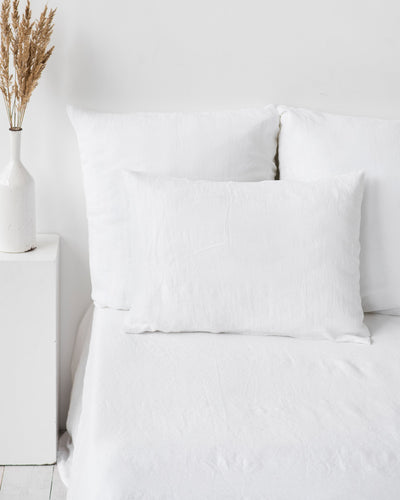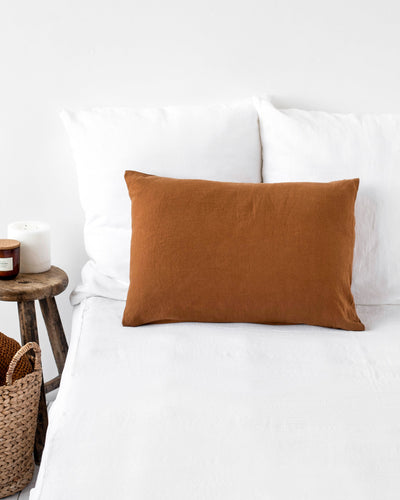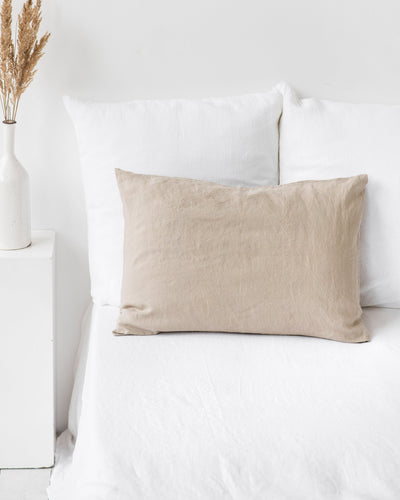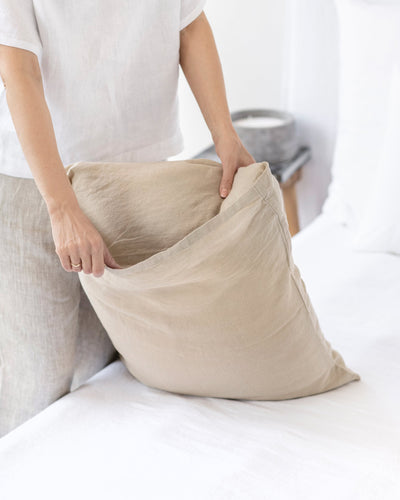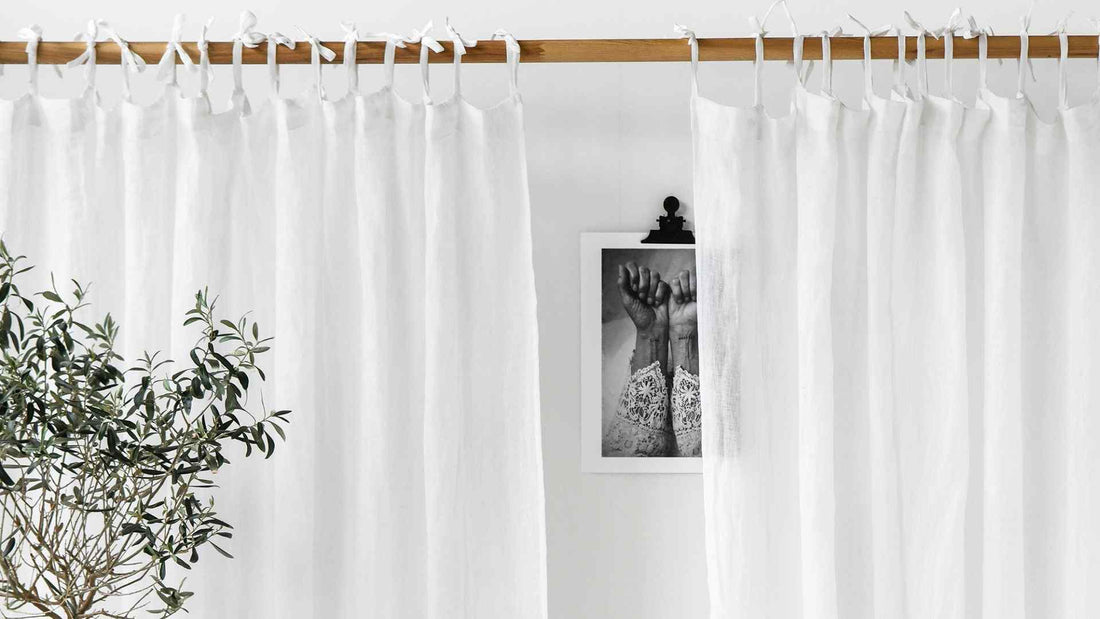
How to Measure Curtains: A Complete Guide for Every Window
When it comes to dressing your windows, accurate curtain measurements can make all the difference between a polished, professional look and a drapery disaster. Wondering how to measure curtains to achieve that perfect fit?
This complete guide will walk you through simple, step-by-step instructions to measure curtains for any window or curtain style—ensuring you get the exact look you want with minimal stress. Ready to transform your space with perfectly measured curtains?
Tools You’ll Need to Measure Curtains
Before you dive into measuring your curtains, it's important to gather everything you'll need to make the process smooth and stress-free. Having the right tools within reach ensures accurate measurements and saves you time. Here's what you'll need:
-
Measuring tape: A reliable measuring tape is essential for precise measurements. We recommend using metal tape because it won't stretch like plastic ones, making it more reliable for accuracy. Also, measure at multiple points because windowsills and floors are not always level.
-
Step ladder: Make sure you have a sturdy ladder tall enough to comfortably reach the area where you plan to hang your curtain rod.
-
Notepad & pen: Keep a notepad handy to jot down your measurements as you go. A pencil is also great for marking your wall to note curtain height, width, and bracket placement.
Step-by-Step Guide: How to Measure Curtains
Measuring curtains doesn't have to be complicated—here are all the steps you need to follow:
Step 1: Measure the curtain rod or track
Start by measuring the width of your curtain rod or track—be sure to measure from one end to the other, but without the finials (those decorative pieces on the ends).
If you've never installed a curtain rod, no worries! Simply measure the width of your window and add 12-16 inches (30-40 cm) to that number. This extra width allows for proper coverage and ensures your curtains can hang freely without obstruction.
Keep in mind that curtain rods or tracks are typically installed 6-8 inches (15-20 cm) away from the window on either side, giving them a balanced, open look.
Step 2: Measure the window width
Now measure from left to right across the window frame to get your baseline. To ensure your curtains will hang nicely and your curtain rod has enough space, we recommend adding at least 6 inches (3 inches per side) to the width.
For example, if your window measures 48 inches, adding 6 inches will give you a total width of 54 inches. This extra space ensures your curtain rod fits comfortably and allows your drapery to flow elegantly.
Step 3: Measure the curtain length
Now that you've nailed down the width, it's time to decide how long you want your curtains to be. There are three common curtain drops to choose from:
-
Sill – Ends about 1 inch (2.5 cm) above the windowsill.
-
Full – Ends about 1 inch (2.5 cm) above the floor.
- Puddle – Extends about 1-3 inches (2.5-8 cm) onto the floor for a more dramatic effect.
Once you've selected the drop that suits your space, measure the distance from the top of your rod or track to where you want your curtains to end. If your rod or track isn't installed yet, keep in mind that they're typically placed about 4 inches (10 cm) above the window frame.
When it comes to the curtain style, don’t forget to factor in the headings! At MagicLinen, we offer four different curtain headings: tab top, rod pocket, pencil pleat (header tape), and tie tops.

Keep in mind that tab tops, rod pockets, and header tape are included in the listed curtain length, and they’re typically about 2 inches (5 cm) in diameter. For ties, they’re not included in the listed length, but they’re around 12 inches (30 cm) long when untied.
Tips for Measuring Specialty Windows
Measuring specialty windows requires a bit more attention to detail, as each unique shape and size may need a customized approach to achieve the perfect fit for your linen curtains.
Measuring for bay windows
Start by measuring the width of each section of the bay window—each pane will need its own measurement. Measure from the outermost edge of each frame and make sure to account for any trim or molding.
Next, for the curtain rod, you can either go with a single rod that covers the entire bay or use separate rods for each section, depending on your preference. Keep in mind that the rod is typically installed about 4-6 inches (10-15 cm) above the window frame.
Sliding glass doors and French doors
For sliding glass doors and French doors, start by measuring the width of the doorframe from one side to the other. For sliding doors, be sure to account for any hardware, like handles or locks, that might extend beyond the frame. For French doors, measure the width of both doors separately if they open independently or measure the full width if they are connected in the middle.
As for the length, measure from the top of the doorframe to the desired curtain drop (sill, full, or puddle length). For both sliding glass doors and French doors, you’ll want to leave extra space on each side of the frame to ensure your curtains can fully open and close without obstruction.
Adjusting Measurements for Specific Curtain Types
When adjusting measurements for specific curtain types, it's important to consider the unique characteristics of each style to ensure the perfect fit and aesthetic appeal.
Blackout curtains


As a general rule of thumb, your blackout linen curtains should always be wider and longer than your actual window. This ensures full coverage and helps prevent any light from leaking around the edges. Typically, your curtain width should be 1.5 to 2 times the width of your window, while the length should be about 6 to 12 inches longer than the window frame.
However, these measurements can be adjusted based on your specific needs. For example, in a nursery, you might want to add even more width and length to create a completely dark environment for your baby’s optimal sleep.
When hanging blackout curtains, make sure to overlap the panels slightly in the center to block out as much light as possible. This overlap ensures a tighter seal, preventing any gaps where light might filter through.
Sheer curtains


Sheer linen curtains are all about creating a light, airy feel, so to get that soft, billowy effect, you'll want to add extra fullness to your measurements. Generally, you'll want to measure your window width and then multiply it by 1.5 to 2 times for the desired fullness.
For example, if your window is 50 inches wide, consider choosing a curtain panel width of 75 to 100 inches. This will allow the fabric to drape beautifully and create that breezy, ethereal look.
For the height, measure from the top of your window frame to where you'd like the curtains to end—whether at the sill, the floor, or somewhere in between. With sheer curtains, a slightly longer length can enhance the flowy, soft effect.
Layered curtains
When layering curtains, like pairing sheer panels with heavier opaque curtains, you'll need to account for both types of fabric and the way they’ll hang together.
Start by measuring your window width and height as you would for standard curtains. For the sheers, remember to add extra fullness to create that airy look—usually 1.5 to 2 times the width of your window. For the heavier, opaque panels, you can go with a more modest fullness, around 1.5 times the window width.
For the height, measure both the sheer and opaque panels separately to ensure they align correctly. Typically, you'll want the sheer panels to hang just a bit higher or slightly off the floor for a light, lifted look, while the heavier panels can reach the floor or fall just short of it.
Common Mistakes to Avoid
When measuring for curtains, a few common mistakes can throw off your entire setup. Here are some key things to watch out for:
-
Forgetting to include rod dimensions: When measuring for curtains, it’s crucial to include the dimensions of the rod or track, as overlooking this detail can result in improper fit or length.
-
Misjudging fabric fullness: To achieve full and luxurious-looking curtains, the fabric width should be 1.5 to 2 times the window width, and even more for sheer fabrics, as underestimating fullness can lead to a flat appearance.
- Incorrect placement of rods or tracks: The ideal placement for curtain rods is 4-6 inches above the window frame and a few inches beyond each side to enhance natural light and create a balanced appearance.
Conclusion
Whether you’re measuring for standard curtains, specialty windows, or specific types like blackout or sheer curtains, careful planning, and accurate measurements are key to achieving a polished, professional finish.
By following this step-by-step guide, you’ll ensure that your curtains not only fit your windows perfectly but also enhance the overall look of your space.
Ready to elevate your windows with a touch of elegance? Discover the beautiful collection of Magiclinen curtains, designed to complement any room with style and sophistication.
Frequently Asked Questions
Should curtains touch the floor?
Yes, curtains should ideally touch the floor for a polished look. You can also go for a slight "puddle" or have them end just above the floor by about 1 inch (2.5 cm) for a more casual feel.
How high should I hang my curtain rod?
Hang the curtain rod 4-6 inches (10-15 cm) above the window frame for a balanced look. For a taller window effect, place it 8-12 inches (20-30 cm) above the frame.

 United States
United States
